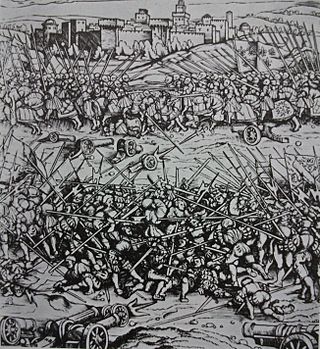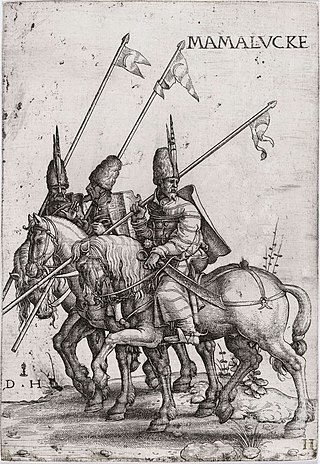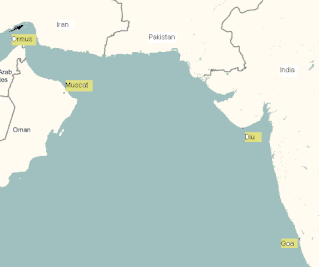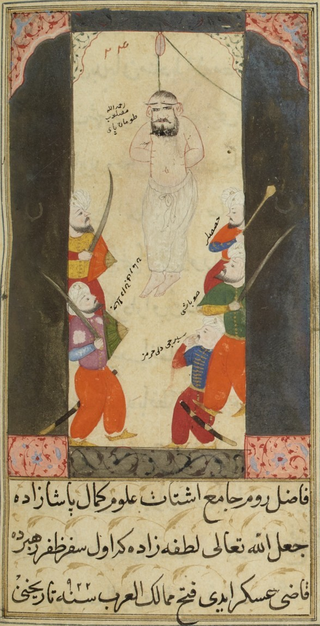
Year 1512 (MDXII) was a leap year starting on Thursday of the Julian calendar.
The 1450s decade ran from January 1, 1450, to December 31, 1459.

Year 1540 (MDXL) was a leap year starting on Thursday of the Julian calendar.

The 1510s decade ran from January 1, 1510, to December 31, 1519.

Year 1518 (MDXVIII) was a common year starting on Friday of the Julian calendar. Within much of Christian Europe, New Year's Day was celebrated on January 1, the rule in the Roman Empire since 45 BC, and in 1518, the year ran from January 1, 1518 to December 31, 1518. In England and Scandinavia, the year ran from the Feast of the Annunciation to March 24, 1519; and in France from Easter Sunday to April 23, 1519. For instance, the will of Leonardo da Vinci, drafted in Amboise on 23 April 1519, shows the legend "Given on the 23rd of April 1518, before Easter".* See Wikisource "1911 Encyclopædia Britannica/Easter".

Year 1516 (MDXVI) was a leap year starting on Tuesday of the Julian calendar, there is also a leap year starting on Saturday of the Gregorian calendar.

Year 1515 (MDXV) was a common year starting on Monday of the Julian calendar.
Year 1491 (MCDXCI) was a common year starting on Saturday of the Julian calendar.

Mamluk or Mamaluk were non-Arab, ethnically diverse enslaved mercenaries, slave-soldiers, and freed slaves who were assigned high-ranking military and administrative duties, serving the ruling Arab and Ottoman dynasties in the Muslim world.

The Burji Mamluks or Circassian Mamluks, sometimes referred to as the Burji dynasty, were the rulers of the Mamluk Sultanate of Egypt from 1382 until 1517. As with the preceding Bahri Mamluks, the members of the Burji Mamluk ruling class were purchased as slaves (mamluks) and manumitted, with the most powerful among them taking the role of sultan in Cairo. During this period, the ruling Mamluks were generally of Circassian origin, drawn from the Christian population of the northern Caucasus. The name Burji, meaning 'of the tower', refers to the traditional residence of these Mamluks in the barracks of the Citadel of Cairo.

Al-Ashraf Qansuh al-Ghuri or Qansuh II al-Ghawri was the second-to-last of the Mamluk Sultans. One of the last and most powerful of the Burji dynasty, he reigned from 1501 to 1516.
The Battle of Ridaniya or Battle of Ridanieh was fought on January 22, 1517, in Egypt. The Ottoman forces of Selim I defeated the Mamluk forces under Al-Ashraf Tuman bay II. The Turks marched into Cairo, and the severed head of Tuman bay II, Egypt’s last Mamluk Sultan, was hung over an entrance gate in the Al Ghourieh quarter of Cairo. Or, alternatively, he was hung from the gate and buried after three days. The Ottoman grand vizier, Hadım Sinan Pasha, was killed in action.

The Battle of Marj Dābiq, a decisive military engagement in Middle Eastern history, was fought on 24 August 1516, near the town of Dabiq, 44 km north of Aleppo. The battle was part of the 1516–17 war between the Ottoman Empire and the Mamluk Sultanate, which ended in an Ottoman victory and conquest of much of the Middle East and brought about the destruction of the Mamluk Sultanate. The Ottoman victory in the battle gave Selim's armies control of the entire region of Syria and opened the door to the conquest of Egypt.

Al-Ashraf Abu Al-Nasr Tuman Bay, better known as Tuman Bay II and Tumanbay II was the Mamluk Sultan of Egypt before the country's conquest by the Ottoman Empire in 1517. He ascended to the sultanic throne during the final period of Mamluk rule in Egypt, after the defeat of Sultan Al-Ashraf Qansuh al-Ghawri by Ottoman Sultan Selim I at the Battle of Marj Dabiq the year prior. He was the last person to hold the title of Sultan of Egypt until the re-establishment of the sultanate 397 years later under Hussein Kamel in 1914.

The Mamluk Sultanate, also known as MamlukEgypt or the Mamluk Empire, was a state that ruled Egypt, the Levant and the Hejaz from the mid-13th to early 16th centuries. It was ruled by a military caste of mamluks headed by a sultan. The sultanate was established with the overthrow of the Ayyubid dynasty in Egypt in 1250 and was conquered by the Ottoman Empire in 1517. Mamluk history is generally divided into the Turkic or Bahri period (1250–1382) and the Circassian or Burji period (1382–1517), called after the predominant ethnicity or corps of the ruling Mamluks during these respective eras.
Hadım Sinan Pasha was a Bosnian-Ottoman nobleman, politician and statesman. He served as the Grand Vizier of the Ottoman Empire from 1516 to 1517. He was a eunuch.

A number of armed engagements between the Egyptian Mamluk Sultanate and the Portuguese Empire in the Indian Ocean took place during the early part of the 16th century. The conflicts came following the expansion of the Portuguese after sailing around the Cape of Good Hope in 1498, from 1505 to the fall of the Mamluk Sultanate in 1517.

The Ottoman–Mamluk War of 1516–1517 was the second major conflict between the Egypt-based Mamluk Sultanate and the Ottoman Empire, which led to the fall of the Mamluk Sultanate and the incorporation of the Levant, Egypt, and the Hejaz as provinces of the Ottoman Empire. The war transformed the Ottoman Empire from a realm at the margins of the Islamic world, mainly located in Anatolia and the Balkans, to a huge empire encompassing much of the traditional lands of Islam, including the cities of Mecca, Cairo, Damascus, and Aleppo. Despite this expansion, the seat of the empire's political power remained in Constantinople.

The capture of Cairo was the final major engagement of the Ottoman Mamluk War of 1516-1517. The city of Cairo, the capital of the Mamluk Sultanate, was sacked and fell into the hands of the Ottoman forces led by Sultan Selim I during the 27-30 January 1517. Following Cairo's fall and the subsequent execution of the last Mamluk Sultan and member of the Abbasid dynasty: Tuman Bay II, the Mamluk Sultanate was absorbed into the expanding Ottoman Empire. Following its conquest, Cairo saw its status reduced from the previously the capital of the Mamluk Sultanate to a provincial city governed from Constantinople. The economic trends from the later years of the Mamluk Sultanate continued under Ottoman rule, with the country being increasingly subject to taxation by the imperial government and its status as a military base to launch further expansion into surrounding lands.

Selim I, known as Selim the Grim or Selim the Resolute, was the sultan of the Ottoman Empire from 1512 to 1520. Despite lasting only eight years, his reign is notable for the enormous expansion of the Empire, particularly his conquest between 1516 and 1517 of the entire Mamluk Sultanate of Egypt, which included all of the Levant, Hejaz, Tihamah and Egypt itself. On the eve of his death in 1520, the Ottoman Empire spanned about 3.4 million km2 (1.3 million sq mi), having grown by seventy percent during Selim's reign.

















